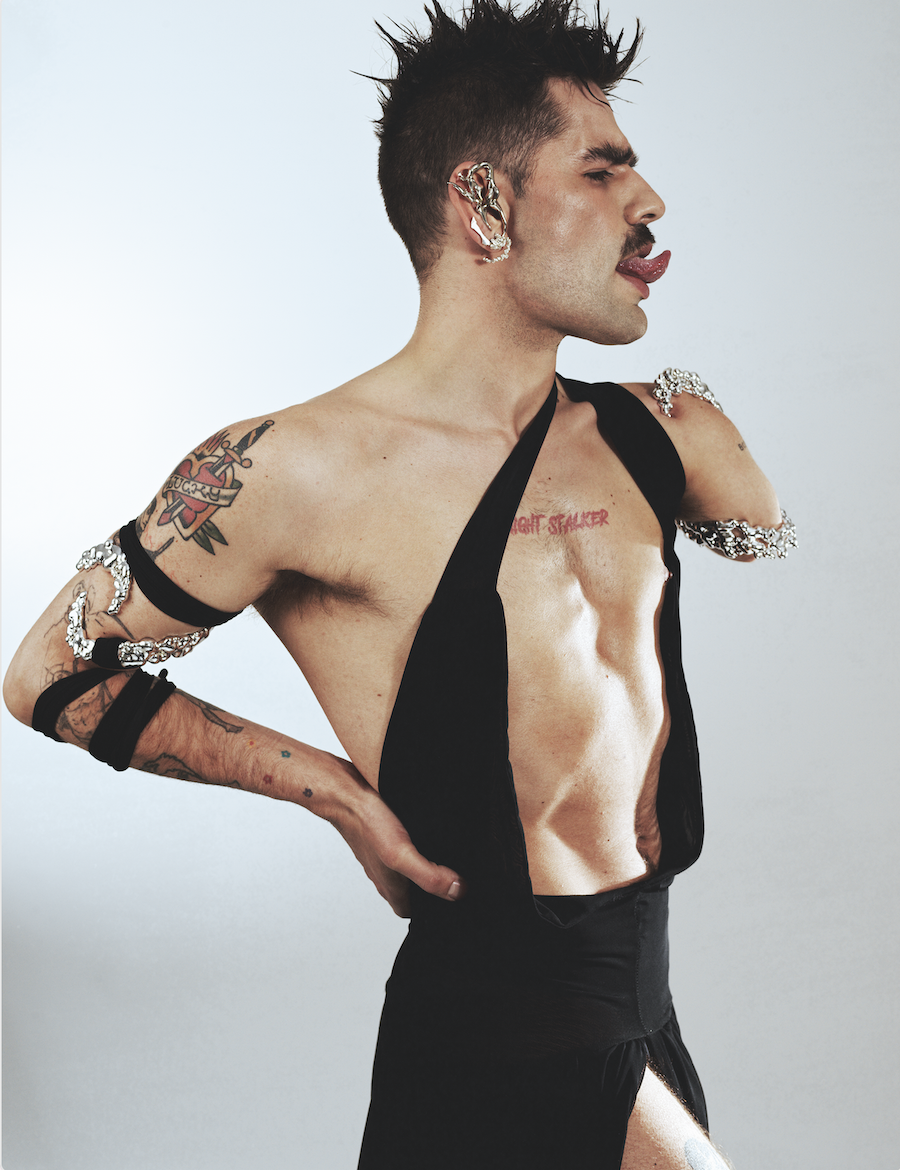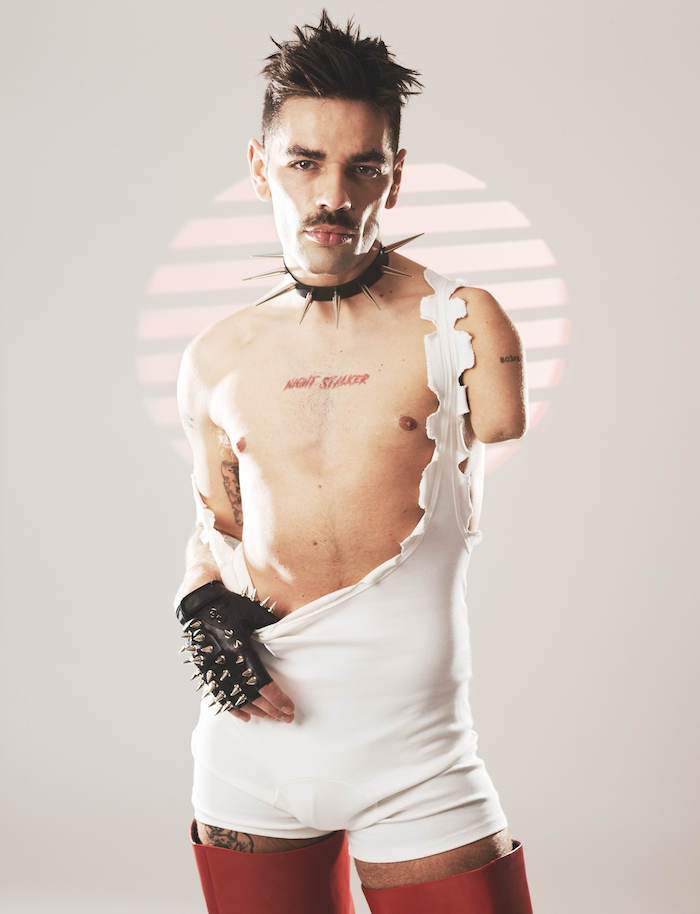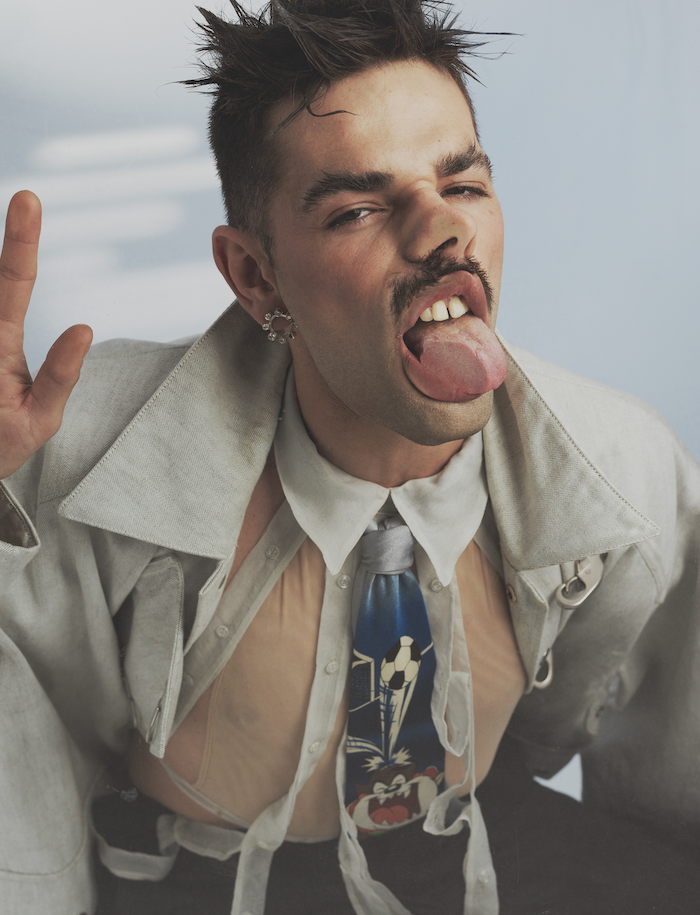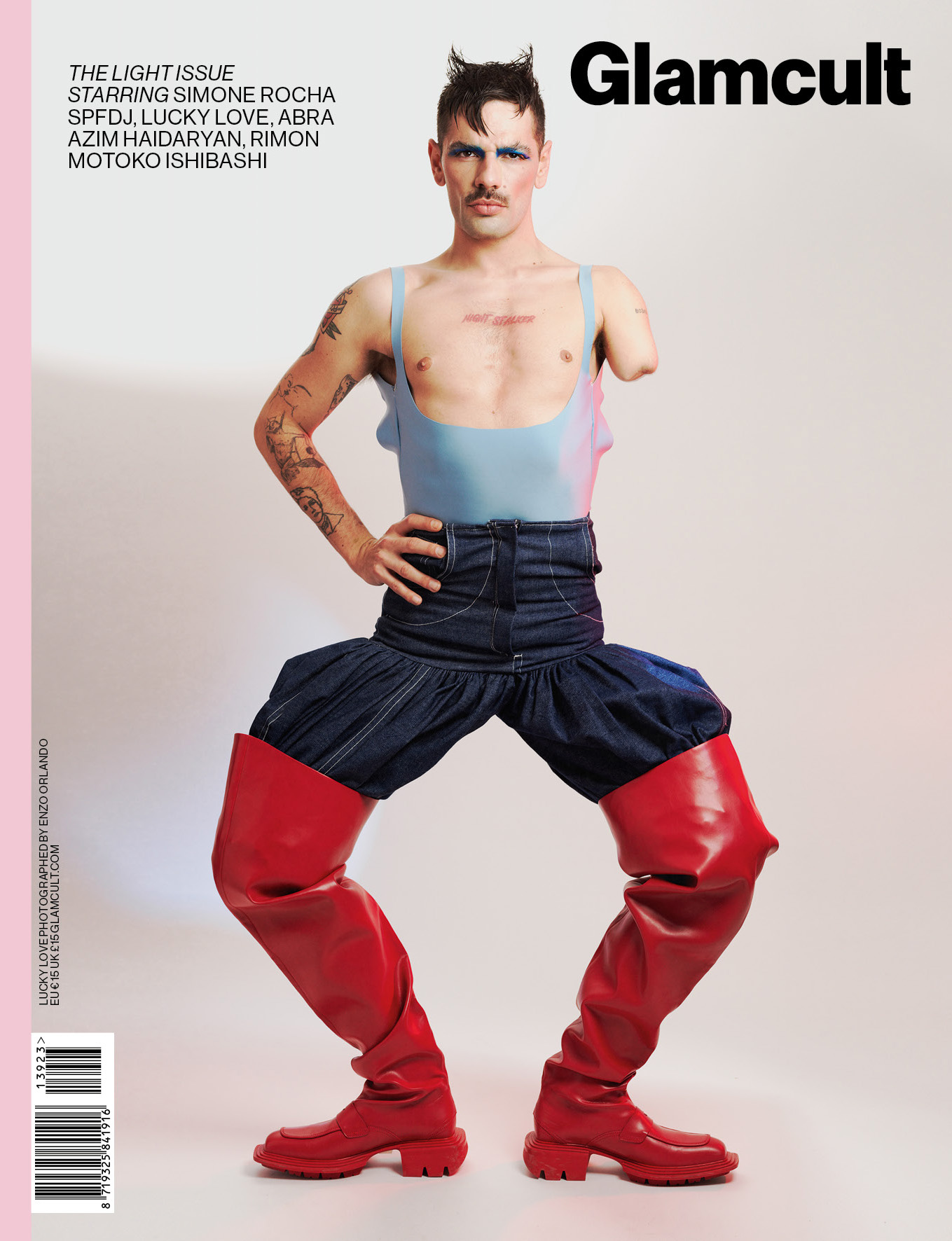“Pop is political by definition — it belongs to the people”

Dress LARUICCI, arm jewellery ARMOR, ear cuff AMORPHOKYRIA, earring COLOMBE D’HUMIÈRES
Love is at the epicentre of all creation for Lucky Love, a.k.a. Luc Bruyère— a poetry-ridden mischief-stirrer ready to wipe out everything we were told about manhood, Queer intimacy, and kinship. What is left following his blazing trail is a world transformed—with his music being a sanctuary for anyone who feels excluded by the dysfunctions of a rotten system. His ethereal, aching vocals are both liberated and liberating, encompassing the romantic grandeur of olden poets and the bold cheek of a modern pop star. The true fuel upon which his star burns so bright, though, is his luminous ability to transform pain into grace, reminding us of the resilience of the human condition. In light of the release of his first album, Tendresse, we felt compelled to learn more about the artist’s unstoppable vision.
Hey! Great to speak to you. How are you doing today?
Today I’m happy! It’s very sunny and beautiful outside, and I’m really excited— I just found out I’m doing my next show at Soho House in Paris later this month.
How exciting. Congrats! You started your career as a dancer, then as a model, actor and screenwriter, among many other things. How did you land where you are today?
My dance education was the first thing ever to come into my life—I started dancing when I was five, and it was the only thing I wanted to do as a kid. When I was about fifteen, all the trouble began. I loved dancing, but it wasn’t enough to express myself—I missed words; I missed language. I was then scouted for Blue Is the Warmest Colour. I had a small role in it, but the director was impressed and brought me to this theatre school in Paris, where I began studying acting. One night, I went to a cabaret place called Madame Arthur. The art director of the cabaret came up to me and asked, “Do you sing?”. I said “Yeah, but only in my shower.” Two days later, I was hired by the cabaret and became a transvestite actor called La Venus des Mille Hommes —which translates to The Venus of a Thousand Men.

Bodysuit DE PINO, glove and choker MALDITO

Coat ÉTUDES, shirt TRIBAL HOTEL, trousers PROTOTYPE, tie stylist’s own, earring COLOMBE D’HUMIÈRES
What a beautiful name!
It’s a tradition—when you come to Madame Arthur, you need to find your own name and build a character around it. A lot of people told me I remind them of the statue La Venus de Milo, so my character was born from the wordplay.
I’m so curious about your work in drag cabaret. I’ve read that Madame Arthur was one of the first of its kind in Paris. What was it like to perform there?
It actually started as a refuge for trans women who were working on the streets. According to legend, one night, a famous trans girl from the 50s was beaten up on the street. She came in covered in blood and bruises, but then she saw a piano and just started playing a show. That’s how Madame Arthur was born. I felt incredibly lucky to be a part of that place, and it was a huge responsibility to preserve this unapologetic way to perform a show. You don’t go to Cabaret to just be entertained. It’s also where you ask questions about yourself, acceptance, society, and your role in it—it’s a really political place. Of course, there’s fun, and I found a unique freedom of being able to give people a show but to also make them think about the wrong and the beautiful aspects of our world. It was a special time—I was super young, gay and free. I loved working at night— I loved the poetry I found in the nighttime. It was also the first time I felt like I belonged to a community, I had a chosen family. This experience has built a lot of who I am now. And, it was at Madame Arthur that a girl came up to me and asked if I wanted to make music independently, which is how it all started.
… Read the full interview in The LIGHT Issue

Shop the magazine here!
Words by Evita Shrestha
Photography by Enzo Orlando
Styling by Pierre Demones
Hair by Salomé Narolles
Make-up by Stella Ceriani
Photography assistance by Karim Allain
Styling assistance by Coppelia Amandin
Special thanks Réda Ait Chégou